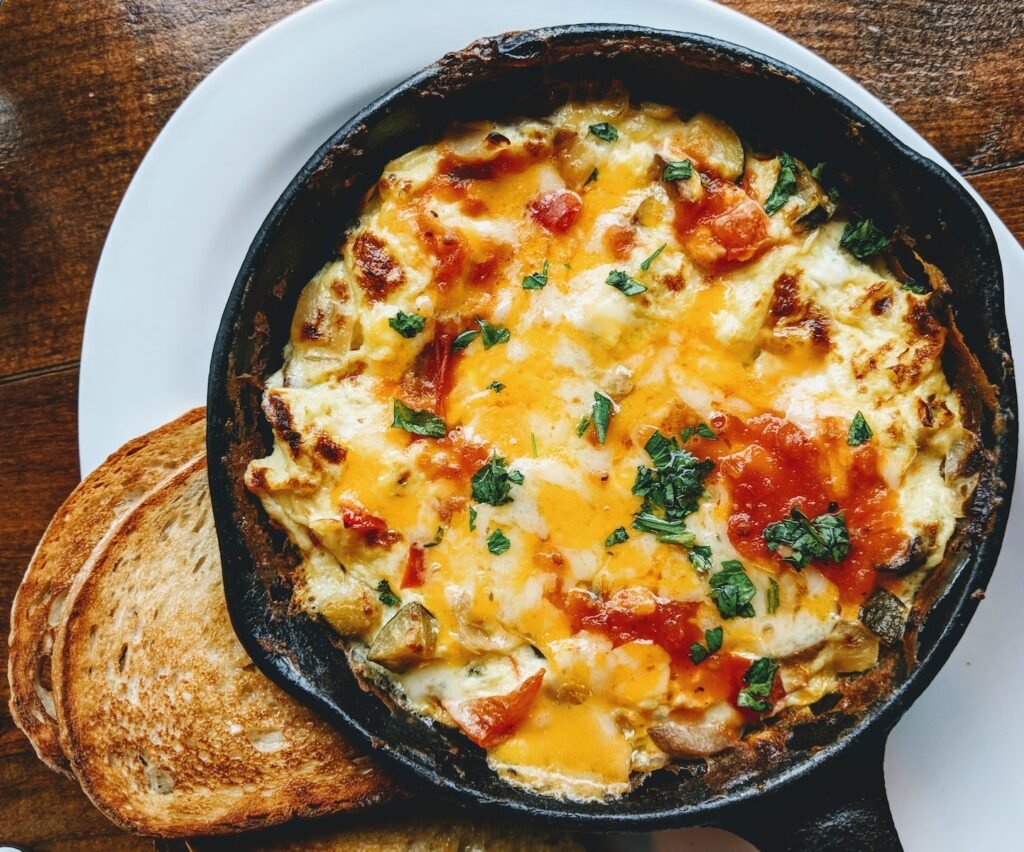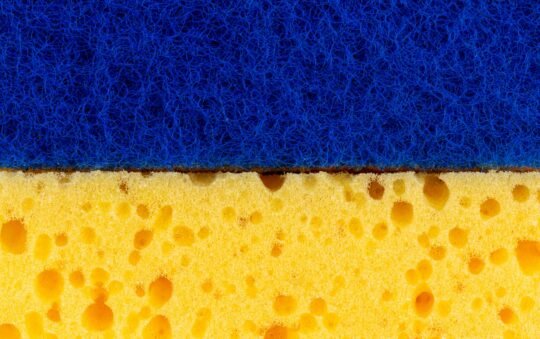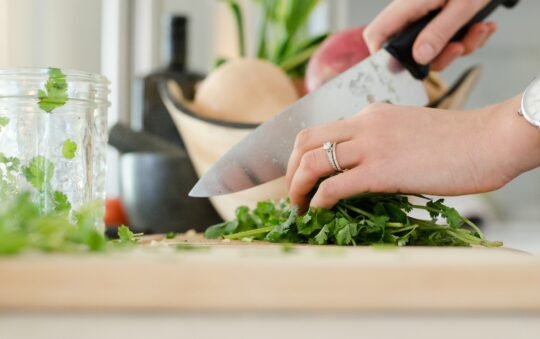Your cast iron skillet is a culinary treasure, a versatile and beloved tool in your kitchen. But, like any treasure, it requires special care to maintain its shine and longevity. From seasoning to cleaning, this article will guide you through the essential steps to care for your cast iron skillet, ensuring that it remains the star of your stovetop for years to come. So, let’s roll up our sleeves and discover the secrets to keeping your cast iron skillet in pristine condition!
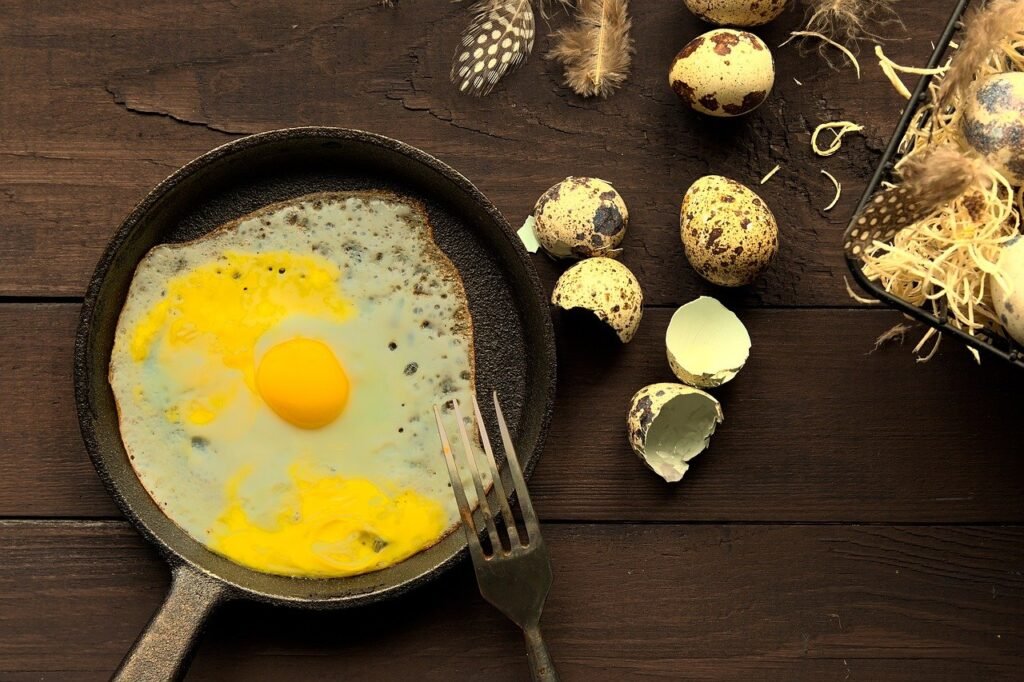
Cleaning
Regular cleaning
To keep your cast iron skillet in top condition, regular cleaning is essential. After each use, it is important to clean the skillet to remove any leftover food particles. This can be done by simply rinsing the skillet with hot water and using a stiff brush or sponge to gently scrub away any residues. Avoid using soap or harsh detergents, as they can remove the seasoning of the skillet.
Removing stubborn food residues
Sometimes, food residues can be stubborn and difficult to remove. In such cases, you can use a combination of salt and oil to create a paste and scrub away the stuck-on food. Apply the paste to the affected area, scrub gently, and then rinse with hot water. This method is gentle yet effective in removing stubborn residues without damaging the seasoned layer of your skillet.
Avoiding soap and dishwasher
It is important to avoid using soap or putting your cast iron skillet in the dishwasher. Soap can strip away the seasoning that helps to provide a natural non-stick surface to your skillet. Similarly, the high heat and harsh detergents used in dishwashers can be damaging to the seasoning and can even cause rusting. Stick to gentle hand washing methods to ensure the longevity of your skillet.
Removing rust
If your cast iron skillet develops rust, don’t panic! rust can be removed easily with a few household items. One effective method is to create a paste using equal parts vinegar and baking soda. Apply the paste to the rusty areas, let it sit for a few minutes, and then scrub with a brush or sponge. Alternatively, you can cut a potato in half, sprinkle some salt on it, and use it as a scrubber to remove rust. Once the rust is gone, make sure to re-season your skillet to restore its protective coating.
Seasoning
What is seasoning?
Seasoning is the process of creating a protective layer on the surface of your cast iron skillet. This layer helps to prevent food from sticking, improves the skillet’s natural non-stick properties, and protects it from rust and corrosion. Seasoning also enhances the flavor of your cooked food and gives your skillet a beautiful, glossy finish.
Initial seasoning
When you first acquire a new cast iron skillet or if you have stripped the old seasoning off, it is important to perform an initial seasoning. Start by thoroughly cleaning the skillet to remove any dirt or debris. Then, apply a thin layer of oil (such as vegetable oil or flaxseed oil) to the entire surface of the skillet, including the handle. Place the skillet upside down on the middle rack of a preheated oven and bake it at a high temperature for about an hour. This process polymerizes the oil, creating a strong and durable seasoning.
Maintaining seasoning
To maintain the seasoning of your cast iron skillet, it is important to use it regularly. Regular use and cooking contribute to the development of a stronger seasoning layer. After each use, clean the skillet using the recommended methods and dry it thoroughly. Applying a thin layer of oil after each use can also help to maintain the seasoning. With proper care and maintenance, the seasoning of your skillet will continue to improve over time.
Restoring seasoning
If your cast iron skillet’s seasoning has become compromised, whether due to rust, stuck-on food, or damage, it is possible to restore it. Start by removing any rust or food residues using the methods mentioned earlier. Then, perform the initial seasoning process again to rebuild the protective layer. With patience and a bit of effort, your skillet can be brought back to its former glory.
Storage
Drying thoroughly
Properly drying your cast iron skillet after each use is crucial to prevent rust and maintain its condition. After washing the skillet, use a clean towel to thoroughly dry it. Make sure to remove any remaining moisture, including from the handle and the small crevices. Leaving the skillet wet can lead to the formation of rust, which can be detrimental to its longevity and cooking performance.
Applying a thin layer of oil
Before storing your cast iron skillet, it is recommended to apply a thin layer of oil. This helps to prevent the formation of rust and keeps the skillet well-maintained. Using a paper towel, coat the entire surface of the skillet, including the handle, with a small amount of oil. Make sure to spread the oil evenly, and then store the skillet in a dry place.
Using paper towels
When applying oil to your cast iron skillet, it is ideal to use paper towels instead of regular cloth towels. Paper towels are less likely to leave behind lint or fibers that can interfere with the seasoning of the skillet. They also provide a more even distribution of the oil, ensuring that every part of the skillet is well-coated.
Storing in a dry place
To protect your cast iron skillet from moisture and potential rust, it is important to store it in a dry place. Avoid storing it in areas where the humidity is high, such as near the sink or in a damp basement. Instead, find a cool and dry spot in your kitchen or pantry to keep your skillet safe and well-preserved until the next use.
Usage Tips
Preheating the skillet
Before cooking with your cast iron skillet, it is advisable to preheat it. Preheating helps to distribute the heat evenly and ensures that your food cooks consistently. Place the skillet on the stove over medium heat and allow it to warm up for a few minutes before adding any ingredients. This step helps to prevent hot spots and promotes optimal cooking results.
Using the right utensils
To preserve the seasoning and prevent damage to your cast iron skillet, it is important to use the right utensils while cooking. Avoid using metal utensils, such as knives or forks, as they can scratch the surface and compromise the seasoning. Opt for wooden, silicone, or heat-resistant plastic utensils instead. These materials are gentle on the skillet and help to maintain its non-stick properties.
Avoiding acidic foods
While cast iron skillets are versatile and can handle various types of dishes, it is best to avoid cooking acidic foods for extended periods. Acidic ingredients, such as tomatoes or citrus fruits, can react with the iron and potentially alter the taste of your food. If you need to cook acidic dishes, it is recommended to do so for a shorter duration and ensure that the skillet is well-seasoned beforehand.
Avoiding excessive heat
Cast iron skillets retain heat exceptionally well and do not require high temperatures for effective cooking. Avoid using excessive heat, as it can damage the skillet’s seasoning and lead to uneven cooking. Opt for medium to medium-high heat settings for most cooking tasks. Remember, cast iron is a great heat conductor, and lower heat can still provide excellent cooking results.
Properly heating oil
When using oil for cooking in your cast iron skillet, it is important to heat it properly. Add the oil to the skillet before turning on the heat and allow it to warm up gradually. This helps the oil to spread evenly across the surface and prevents it from smoking excessively. Heating the oil slowly also promotes better flavor infusion and prevents the food from sticking to the skillet.
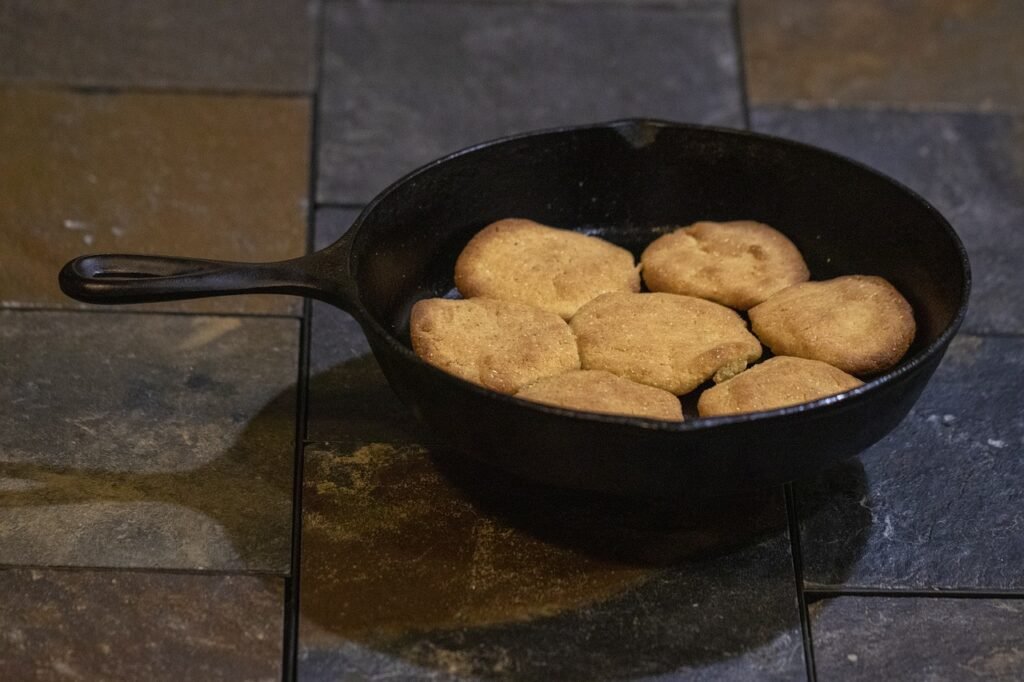
Avoiding Damage
Avoiding sudden temperature changes
Cast iron skillets are susceptible to thermal shock, which can cause cracking or warping. To avoid damaging your skillet, it is important to avoid sudden temperature changes. For example, do not transfer a hot skillet directly from the stovetop to a cold surface or immerse it in cold water immediately after use. Allow the skillet to cool slowly on a heat-resistant surface before moving or cleaning it.
No metal utensils
Using metal utensils in your cast iron skillet can cause scratches and damage the seasoning. To preserve the skillet’s non-stick properties and longevity, it is best to refrain from using metal utensils. Instead, opt for utensils made of wood, silicone, or heat-resistant plastic. These materials are gentle on the skillet’s surface and help to maintain its natural non-stick coating.
Avoiding rough scrubbing
When cleaning your cast iron skillet, it is important to avoid rough scrubbing techniques that can damage the seasoning. Use a soft brush or sponge to gently scrub away any food residues. Avoid using abrasive cleaners or scouring pads, as they can strip away the protective layer and expose the cast iron to potential damage. Gentle yet thorough cleaning methods will help to maintain the skillet’s condition.
Avoiding prolonged soaking
While it is important to clean your cast iron skillet promptly after use, it is equally crucial to avoid prolonged soaking. Leaving the skillet submerged in water for extended periods can lead to rust formation and the deterioration of the seasoning. Instead, promptly clean the skillet using the recommended cleaning methods and make sure to dry it thoroughly to prevent any moisture-related issues.
Removing Rust
Using vinegar
If your cast iron skillet has developed rust, vinegar can be an effective natural remedy. Simply fill the skillet with equal parts water and vinegar, and allow it to soak for a few hours or overnight. The acidity of the vinegar helps to loosen and dissolve the rust. After soaking, gently scrub the rusty areas with a brush or sponge until the rust is removed. Rinse the skillet thoroughly, dry it, and proceed with the seasoning process to restore its protective layer.
Using baking soda
Baking soda is another household item that can help in removing rust from your cast iron skillet. Create a paste by mixing baking soda with a small amount of water until it forms a thick consistency. Apply the paste to the rusty areas, ensuring complete coverage. Let it sit for a few hours or overnight. Scrub the paste with a brush or sponge to remove the rust, and rinse the skillet thoroughly. Dry the skillet and proceed with re-seasoning.
Using a potato and salt
For a natural and effective rust removal method, you can use a potato and salt combination. Cut a potato in half and sprinkle some salt on the cut side. Rub the potato vigorously over the rusty areas of the skillet, using the salt as an abrasive agent. The acidity of the potato and the abrasive nature of the salt work together to remove the rust. Rinse the skillet, dry it thoroughly, and move on to the re-seasoning process.
Re-seasoning afterward
Once the rust has been successfully removed from your cast iron skillet, it is important to re-season it to restore the protective layer. Follow the initial seasoning process, which involves cleaning the skillet, applying a thin layer of oil, and baking it in the oven at a high temperature. Re-seasoning ensures that the skillet is properly protected, and it also provides an opportunity to improve the seasoning on your skillet.
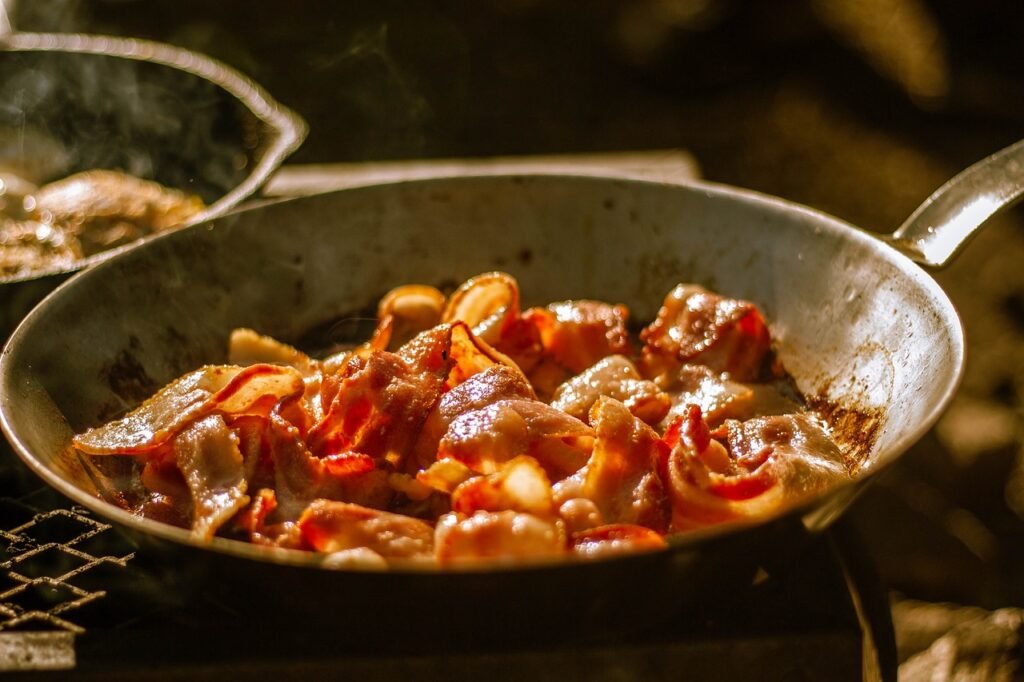
Re-Seasoning
Stripping old seasoning
In some cases, you may need to strip the old seasoning off your cast iron skillet. This can be done if the seasoning is worn out, damaged, or if you are acquiring a used skillet. There are a few methods to strip old seasoning, such as using oven cleaner, vinegar, or an electrolysis tank. Follow the instructions provided with each method to safely remove the old seasoning and prepare the skillet for a fresh layer of seasoning.
Applying a new layer of oil
After stripping the old seasoning or if you are working with a newly acquired skillet, it is essential to apply a new layer of oil to properly season it. Clean the skillet thoroughly to remove any residue from the stripping process. Once the skillet is dry, apply a thin layer of oil using a paper towel, ensuring complete coverage. Make sure to include the handle as well. The oil will polymerize during the baking process, creating a protective layer.
Baking the skillet
To complete the re-seasoning process, place the lightly oiled skillet upside down on the middle rack of a preheated oven. Bake the skillet at a high temperature, typically around 400°F (200°C), for about an hour. This allows the oil to polymerize and form a durable seasoning layer. After baking, let the skillet cool in the oven before removing it. Your cast iron skillet is now ready to be used with its fresh layer of seasoning.
Re-Seasoning with Flaxseed Oil
Benefits of flaxseed oil
While traditional vegetable oil is commonly used for seasoning cast iron skillets, some enthusiasts prefer flaxseed oil due to its superior polymerization properties. Flaxseed oil creates a harder and smoother seasoning layer, which enhances the skillet’s non-stick properties and durability. It also develops a beautiful dark patina over time, giving your skillet a unique appearance.
Cleaning the skillet
Before re-seasoning your cast iron skillet with flaxseed oil, it is important to clean it thoroughly. Remove any existing seasoning or rust using the appropriate methods. Ensure that the skillet is completely dry and free from any residue before proceeding with the flaxseed oil seasoning process.
Applying flaxseed oil
Apply a thin layer of flaxseed oil to the entire surface of the clean and dry skillet, including the handle. Use a paper towel or clean cloth to spread the oil evenly. Make sure to cover every part of the skillet to ensure an even seasoning layer. The thin layer of flaxseed oil will polymerize and create a protective coating when baked in the oven.
Baking the skillet
After applying the flaxseed oil, place the skillet upside down on the middle rack of a preheated oven. Bake the skillet at a high temperature, typically around 500°F (260°C), for about an hour. This high heat helps to polymerize the oil and create a strong seasoning layer. Allow the skillet to cool in the oven before removing it. Your cast iron skillet is now re-seasoned with flaxseed oil and ready to be used.

Common Mistakes to Avoid
Using too much oil
One common mistake in cast iron skillet care is using too much oil during the seasoning process or while cooking. Applying a thick layer of oil during seasoning can result in a sticky and uneven seasoning layer. Similarly, using excessive amounts of oil while cooking can lead to a greasy residue on your food. Remember to use a thin layer of oil for both seasoning and cooking to achieve optimal results.
Leaving water in the skillet
Leaving water in your cast iron skillet, whether during cleaning or storage, is a common mistake that can lead to rust formation. Moisture promotes the oxidation of iron, resulting in rust. Always ensure that the skillet is thoroughly dried after cleaning and before storing it. Additionally, avoid immersing the skillet in water for prolonged periods to prevent rust and maintain its longevity.
Using abrasive cleaners
Abrasive cleaners, such as steel wool or harsh scrubbing pads, should be avoided when cleaning your cast iron skillet. These materials can scratch the surface and strip away the seasoning. Opt for soft brushes or sponges instead, and use gentle cleaning techniques. This will help to preserve the seasoning and prevent any damage to your skillet.
Restoring an Old Skillet
Removing rust and buildup
If you have come across an old cast iron skillet with rust and a thick layer of buildup, restoring it can be a rewarding project. Start by removing the rust using the rust removal methods mentioned earlier. Once the rust is gone, consider using a scraper or a stiff brush to remove any remaining buildup or residues. Thoroughly clean the skillet to prepare it for the re-seasoning process.
Re-seasoning multiple times
Restoring an old cast iron skillet may require several rounds of re-seasoning to achieve the desired results. After the initial re-seasoning process, cook and use the skillet regularly to continue building up the seasoning layers. Each time you use the skillet, the oils from your cooking will contribute to the improvement of the seasoning, resulting in a better non-stick surface and enhanced cooking performance.
Regular usage and maintenance
To maintain the restored old skillet’s condition, it is important to continue using and maintaining it regularly. Regular usage helps to build up the seasoning layer and keep it in optimal condition. After each use, make sure to clean and dry the skillet thoroughly. Applying a thin layer of oil and storing it in a dry place will further contribute to its longevity. By incorporating regular usage and maintenance into your routine, you can enjoy your restored old cast iron skillet for years to come.
Caring for your cast iron skillet is the key to its longevity and optimal performance. By following these cleaning, seasoning, storage, usage, and maintenance tips, you can ensure that your skillet remains in excellent condition for generations. Treat your cast iron skillet with care, and it will reward you with delicious meals and many memorable cooking experiences.
